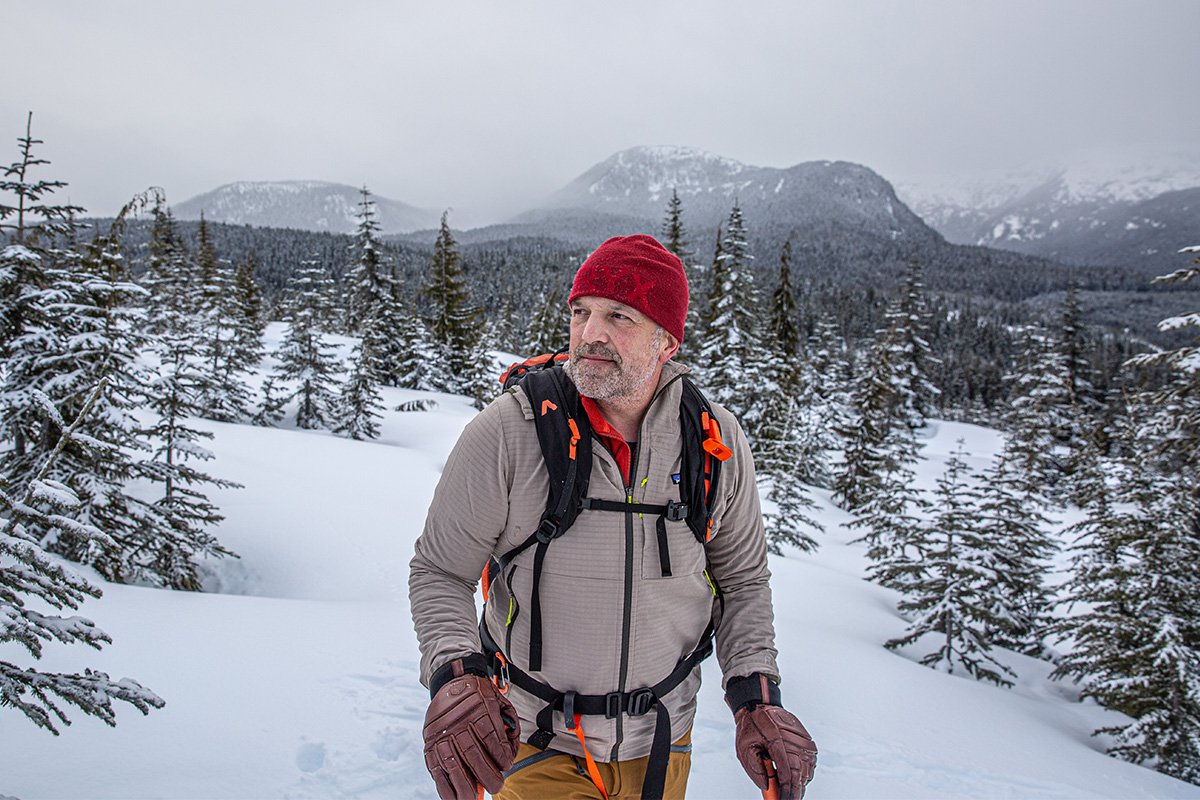
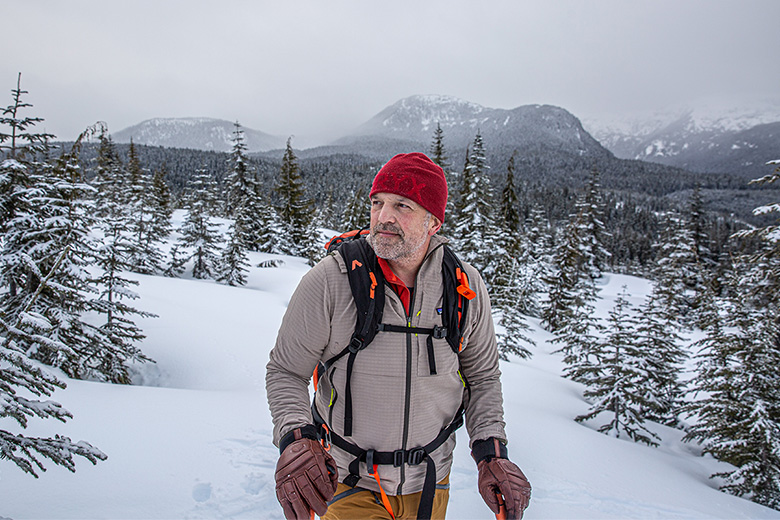
Price: $219
Weight: 14.2 oz.
Fleece weight: Light/midweight
What we like: Highly weather-resistant, breathable, and hardwearing—a great match for demanding pursuits like climbing and backcountry skiing.
What we don’t: Loose fit doesn’t wick moisture well and can make it tough to add a shell overtop.
See the Patagonia R1 TechFace
Patagonia has one of the most extensive fleece collections on the market, and their performance-focused Regulator (R) series is designed with active use in mind. Straddling the softshell and fleece categories, the R1 TechFace Hoody takes their popular R1 and adds more weather and abrasion resistance. We took the hoody backcountry skiing and fly fishing in British Columbia this past winter and came away with mostly positive feedback. It’s not the lightest fleece available, and the looser fit doesn't wick moisture well, but it’s a great match for climbers, skiers, and other active outdoor-goers who want a baselayer and light shell in one. Below we break down our experiences with the R1 TechFace Hoody. To see how it stacks up to the competition, see our articles on the best fleece jackets and best softshell jackets.
Editor's note: We updated this review on April 11, 2025, to reflect our experiences with the latest R1 TechFace Hoody, which was revamped last year. Notable changes include a stronger sustainability focus, a slightly stretchier—albeit 0.4-ounce-heavier—construction, and tweaks to the pockets, cuffs, and hood.
One of the biggest selling points of the Patagonia R1 TechFace Hoody is its breathability, which is ideal for cool-weather activities like hiking, backpacking, and climbing. I wore the jacket throughout this past winter, subjecting it to everything from snowy backcountry outings on skis and snowshoes to wading through frigid rivers. The jacket’s grid-like patterning allows for ample airflow and kept me comfortable even when skinning up steep switchbacks or trudging through knee-deep snow. There aren’t any pit zips for dumping excess heat, but unzipping the main zipper partway proved to be a viable solution in favorable conditions. I also like to leave the hand pockets open (if there’s nothing inside, of course), as they have a mesh lining to assist with ventilation.
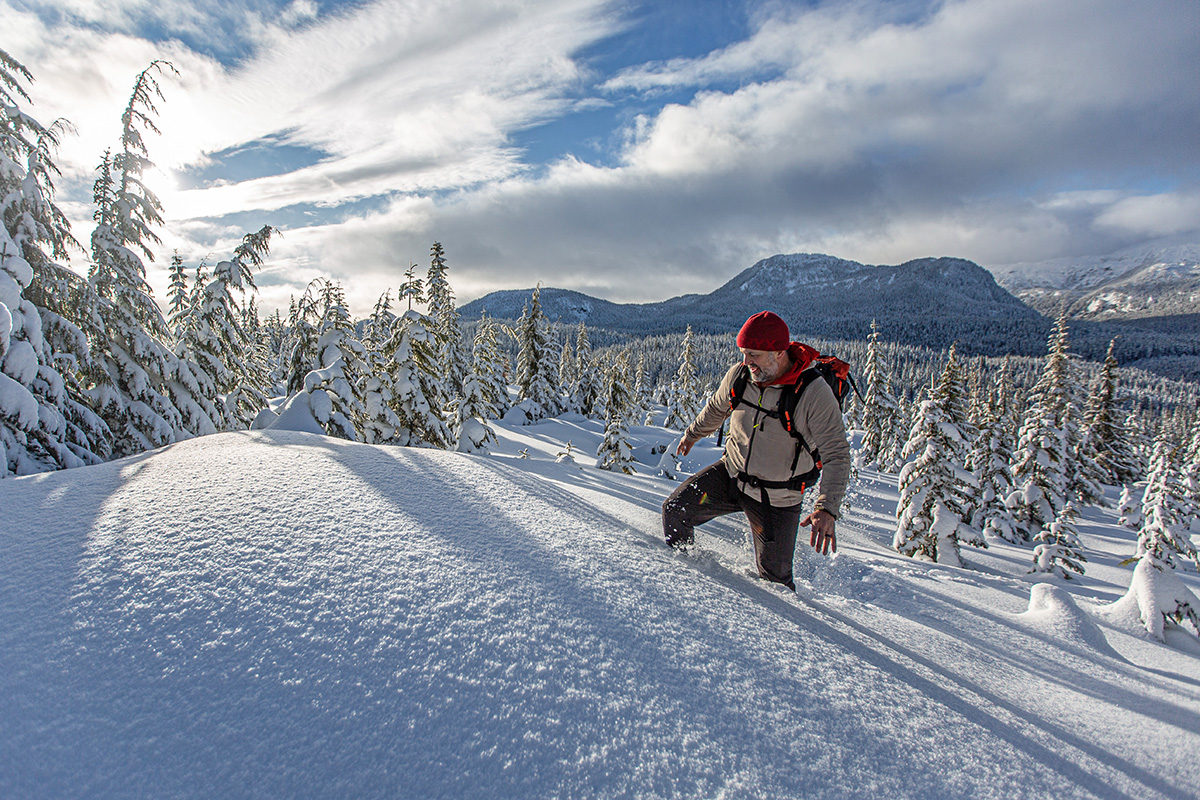
All that said, since the R1 TechFace Hoody doesn’t fit snugly against the skin (more on this in “Fit and Sizing” below), I found it doesn’t wick sweat as well as more fitted fleeces like Rab’s Tecton Hoody. And it wouldn’t be my first pick on mild days—in warmer temperatures, I overheated quickly while ascending steep, lengthy sections of trail. I should note that I run very warm, so this wasn’t too surprising, but the R1 TechFace nevertheless is best suited for cool- to cold-weather objectives.
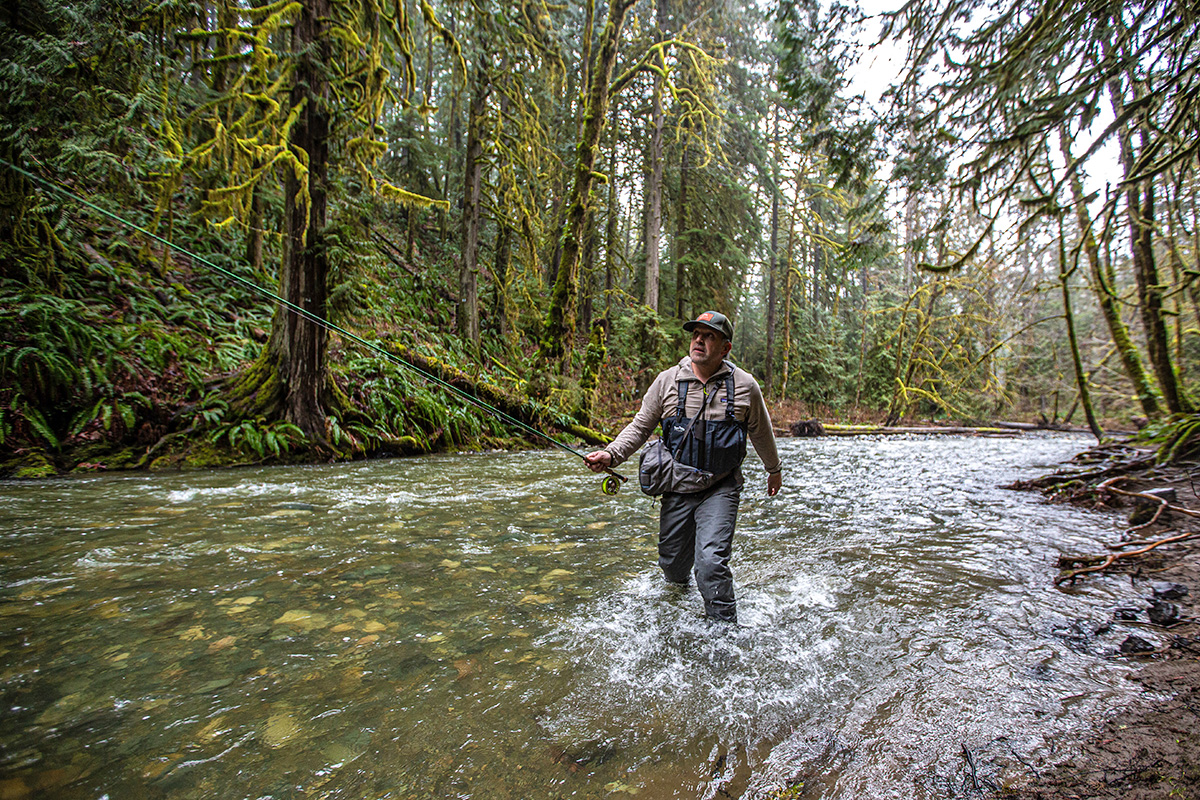
As I touched on above, the warmth of the R1 TechFace limits it to colder days. If I’m exerting, temperatures are mild, and the sun is out, I’m very quick to warm up in the jacket. As I mentioned, I do run hot, and the aforementioned breathability makes this jacket suitable for most shoulder-season activities and conditions. All in all, it’s become a go-to layer for me while backcountry touring this past fall and winter, allowing me to stay comfortable with just a light/midweight wool baselayer underneath. I’ve also found it nice for throwing on during transitions on cold, windy ridgelines, as well as for sitting around camp in cooler temperatures and packing up our van on chilly mornings. And because of the fairly generous fit, I can easily wear the R1 in colder conditions by adding a thin midlayer (like the Rab Tecton Hoody) underneath. It’s not quite roomy enough to accommodate a thicker puffy like Rab’s Mythic Alpine, but I was able to add that jacket overtop instead when temperatures hit below freezing.
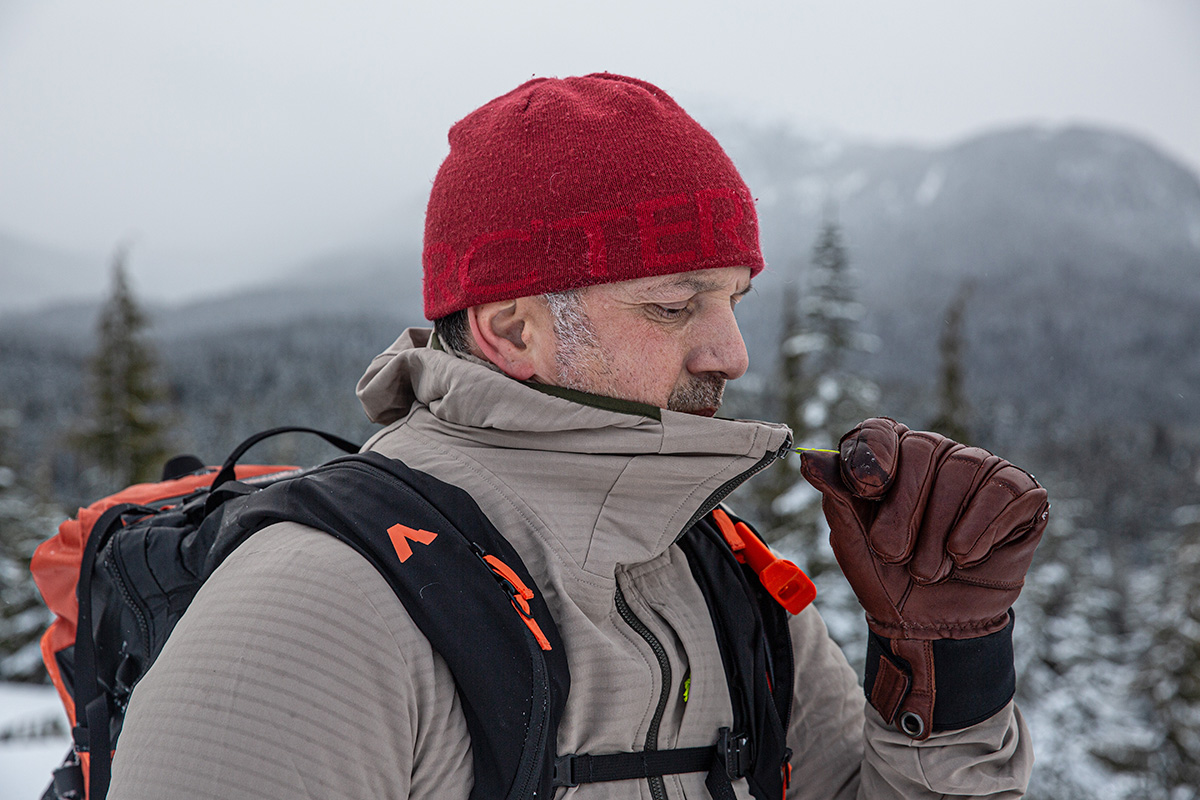
As far as comfort goes, the R1 TechFace is decently pliable and cozy, but it lacks the super soft and supple feel that you get with a standard fleece and has much less loft than Patagonia’s own standard R1 and R2. That said, while wearing a short-sleeve baselayer underneath, I had no issues with abrasion or rubbing, and the inner fabric felt comfortable against bare skin. I also appreciate that Patagonia upped the spandex content with the latest version (from 8% to 10%), which translates to a nice boost in stretch. For me, one telltale sign of comfort is if I’m willing to drive or hang out in our van in a jacket, and I’ve done plenty of both in the R1 TechFace.

Fleeces and softshells aren’t the best options for protecting against harsh weather—for this, we turn to hardshells and rain jackets—but the R1 TechFace Hoody does an admirable job in light rain and wind. For starters, the jacket has a durable water-repellent (DWR) finish that helps moisture bead up on the surface rather than soaking through, and the double-weave fabric is highly wind-resistant. It’s become a staple for me while backcountry skiing and fly fishing this past winter, proving itself as a capable barrier while skinning and roaming my local rivers. When the mercury dropped and the wind was really howling, however, I did need to don my hardshell jacket to fend off the chill. And once wet, the R1 TechFace does take a while to dry. In the end, the R1 can pull double duty as a shell in a pinch, but it’s best suited for mild days and non-inclement conditions.

My R1 TechFace Hoody in a men’s size large clocked in at 1 pound even (it’s listed at 14.2 oz., like for a medium), which falls at the lighter end of the softshell spectrum but is fairly heavy for a performance-focused fleece. For reference, Arc’teryx’s similarly backcountry-ready Kyanite Lightweight Hoody weighs just 10.4 ounces, their warmer Kyanite Hoody is 15 ounces, and Patagonia’s own R1 Pullover Hoody—a more breathable but less abrasion- and weather-resistant alternative—comes in at 10.2 ounces. For a step up in warmth, Patagonia also makes their R2 in a TechFace version for an additional $10 (1 lb. 2.3 oz.). On the bright side, the R1 does stuff easily into its own hood and can be further compressed with the drawcord, although I wish it had a dedicated stuff pocket (it does fit in its pocket, but the zipper isn’t designed for this).
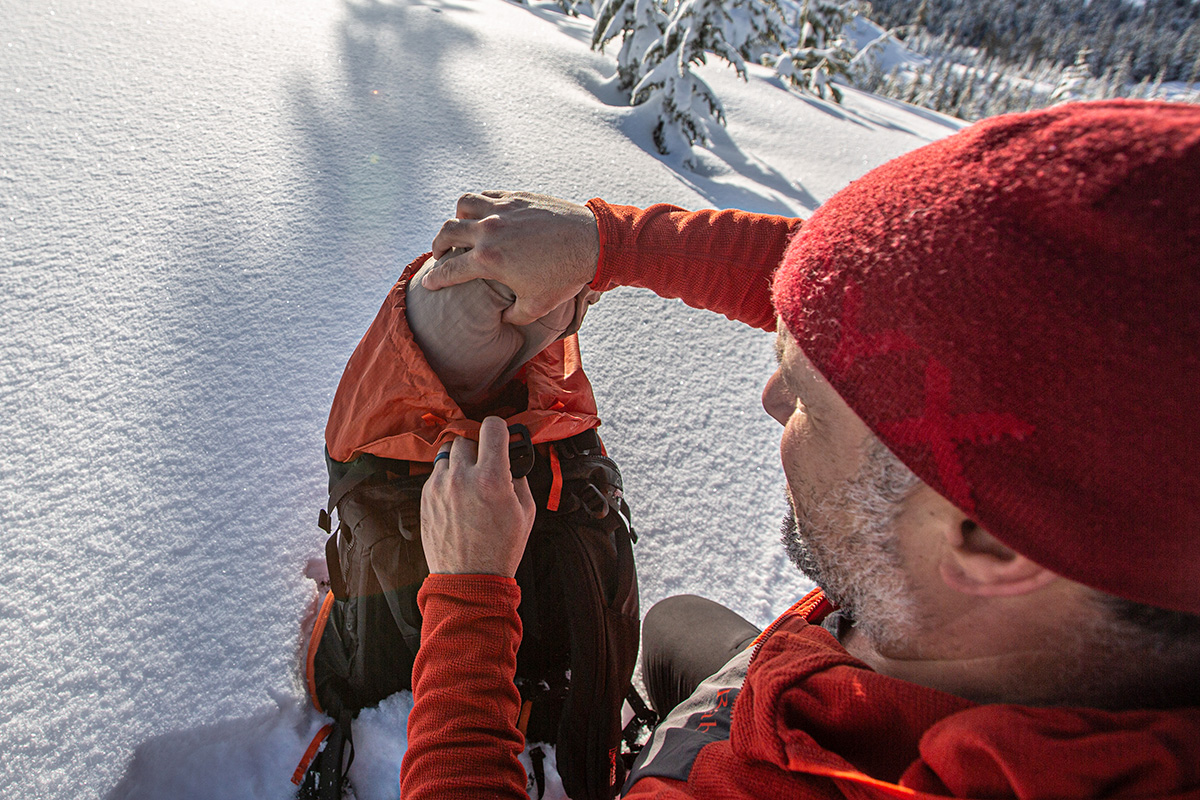
The hood on the R1 TechFace is quite versatile: It's designed to fit close to the head when cinched and can easily (and comfortably) be worn under a climbing or ski helmet. However, I found it was also large and elastic enough to stretch over an alpine climbing or even low-profile ski helmet, although it can restrict movement at the neck when fully zipped (undoing the main zip a couple inches helps). Additionally, the hood features a laminated visor that does a nice job keeping moisture out of the eyes. And as far as adjustability goes, the hood sports a single drawcord at the back for dialing in fit. It’s worth noting that the prior version had two more drawcords at the base of the collar for tweaking the aperture, but I found that the single cord still allowed for great customization. The toggle is small and located underneath a protective “garage,” however, so it can be difficult to manipulate when wearing gloves.
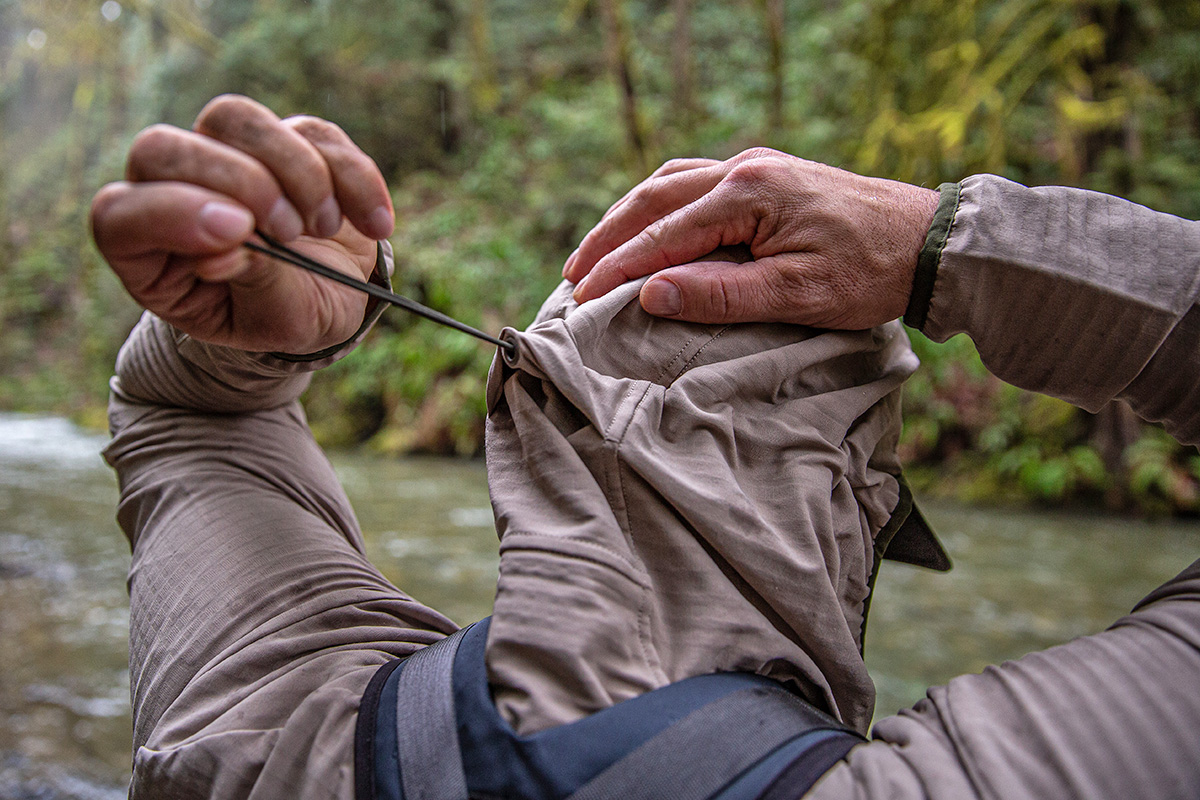
The R1 TechFace Hoody comes decently equipped for stashing the essentials with two large hand pockets and one external chest pocket. (Note: The prior version had an internal chest pocket, but we prefer the external positioning for ease of access when wearing a pack or gloves.) The hand pockets are placed high enough to allow access while wearing a climbing harness or backpack hipbelt, and the chest pocket proved to be an ideal spot for stashing my fly box (it’s also big enough for a phone).
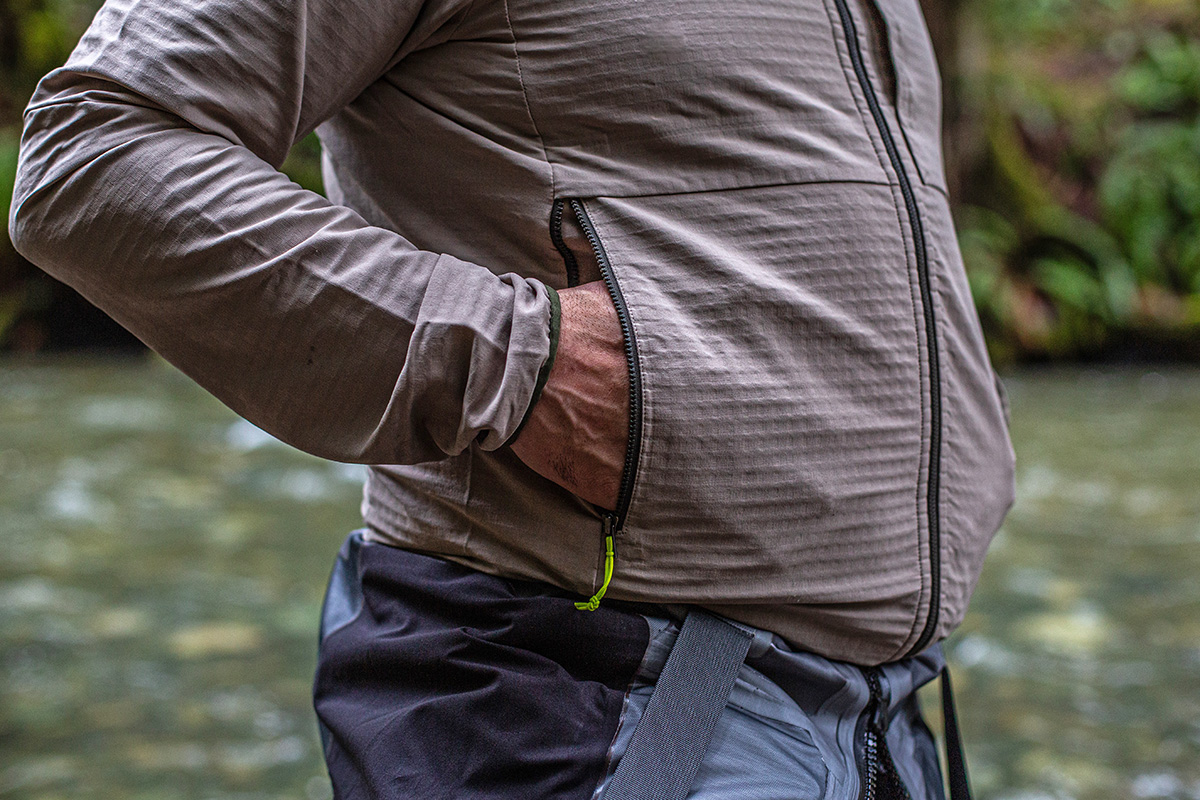
Patagonia is known for their quality craftsmanship, and the R1 TechFace Hoody is exactly what we’ve come to expect from the brand. The fabric is a mix of 90% polyester and 10% spandex, which feels decently soft against the skin and offers great mobility for activities like backpacking, ski touring, and climbing. Further, all features are well executed and holding up well, from the adjustable and functional hood to the snag-resistant cuffs and cinchable hem. Finally, the jacket has decent everyday appeal with a clean look and classy styling.
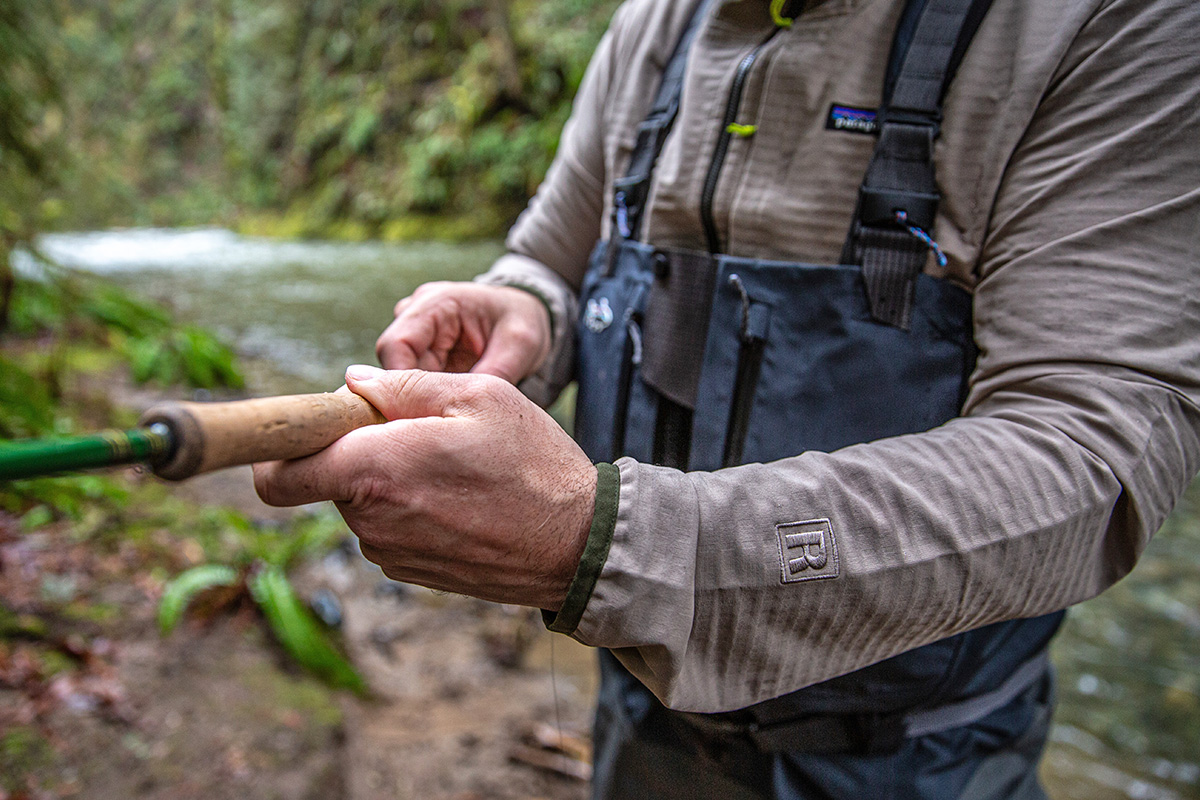
I ordered my usual men’s size large in the R1 TechFace Hoody and found it to be roomier than expected given the “slim” designation. I wouldn’t go as far as calling it boxy, and it does seem trimmer than the past-generation version, but I think “relaxed” is a more appropriate moniker. This can be a good thing for those who plan to layer underneath—I was able to wear a lightweight fleece (the Rab Tecton Hoody) as a baselayer and throw on my Arc’teryx Alpha SV hardshell overtop when the weather turned—but it’s not a great next-to-skin layer (the baggier fit doesn’t wick moisture as well as a more fitted piece). That said, the jacket is the perfect length at the arms, waist, and shoulders for me, and the healthy dose of spandex and articulated patterning add a nice dose of stretch that makes it very easy to move around in.
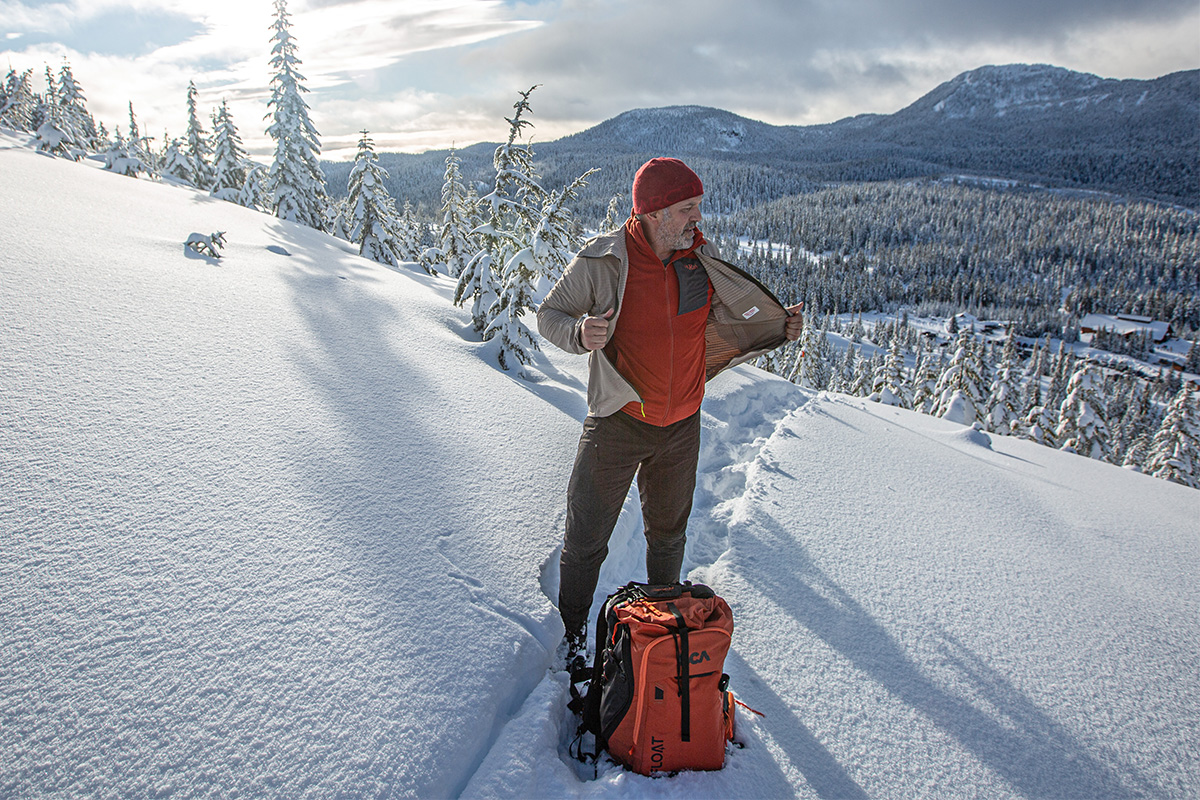
As expected from the brand, the R1 TechFace Hoody embodies Patagonia’s strong focus on sustainability. In addition to using mostly recycled materials for the shell fabric, Patagonia also opted for solution dyeing to create the colorways, which requires considerably less water usage and carbon emissions than standard dyeing practices. The hoody is also Fair Trade-certified, which indicates that Patagonia put extra money into production to help ensure workers are compensated fairly and can fund community projects, healthcare programs, and more (you can read more about the program here). Finally, the jacket is bluesign-approved, meaning it meets strict safety and environmental requirements, and boasts a PFAS-free DWR finish that forgoes the use of harmful “forever chemicals” that are notorious for their inability to break down over time.
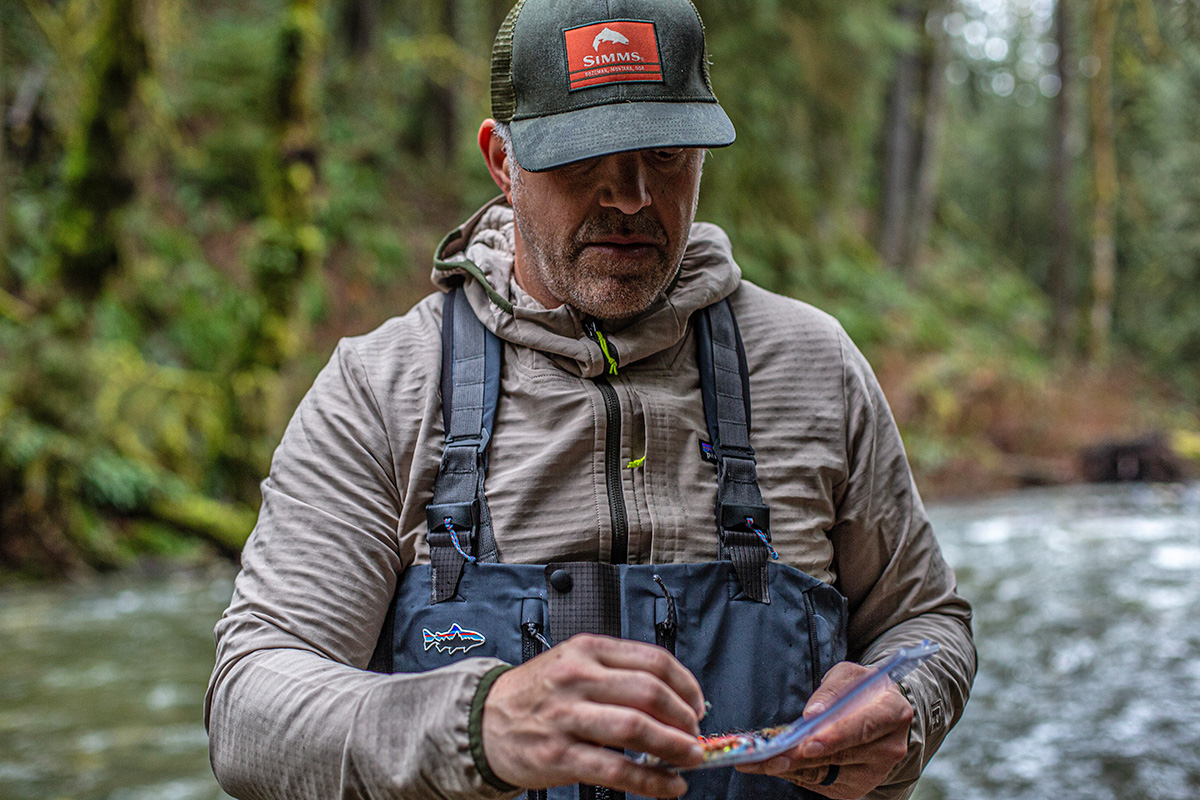
We brought the R1 TechFace Hoody into the B.C. backcountry for testing, and the R1 collection includes a number of other variations. It’s also sold in a non-hooded version for $20 less and a 2.3-ounce drop in weight, although given the jacket’s climbing intentions, we think it’s worth spending up for the hoody. On the women’s side, the CrossStrata bears a very strong resemblance to the R1 TechFace and is offered in two different styles: the R1 CrossStrata Jacket ($169) and R1 CrossStrata Hoody ($189). Despite a similar overall construction (including the same mix of materials), the women’s CrossStrata Hoody boasts a stretch fabric at the shoulders for added range of movement, has a lower-profile hood that’s not designed to fit over a helmet, features an additional drop-in pocket inside the external chest pocket, and has only partial elastic around the cuffs.
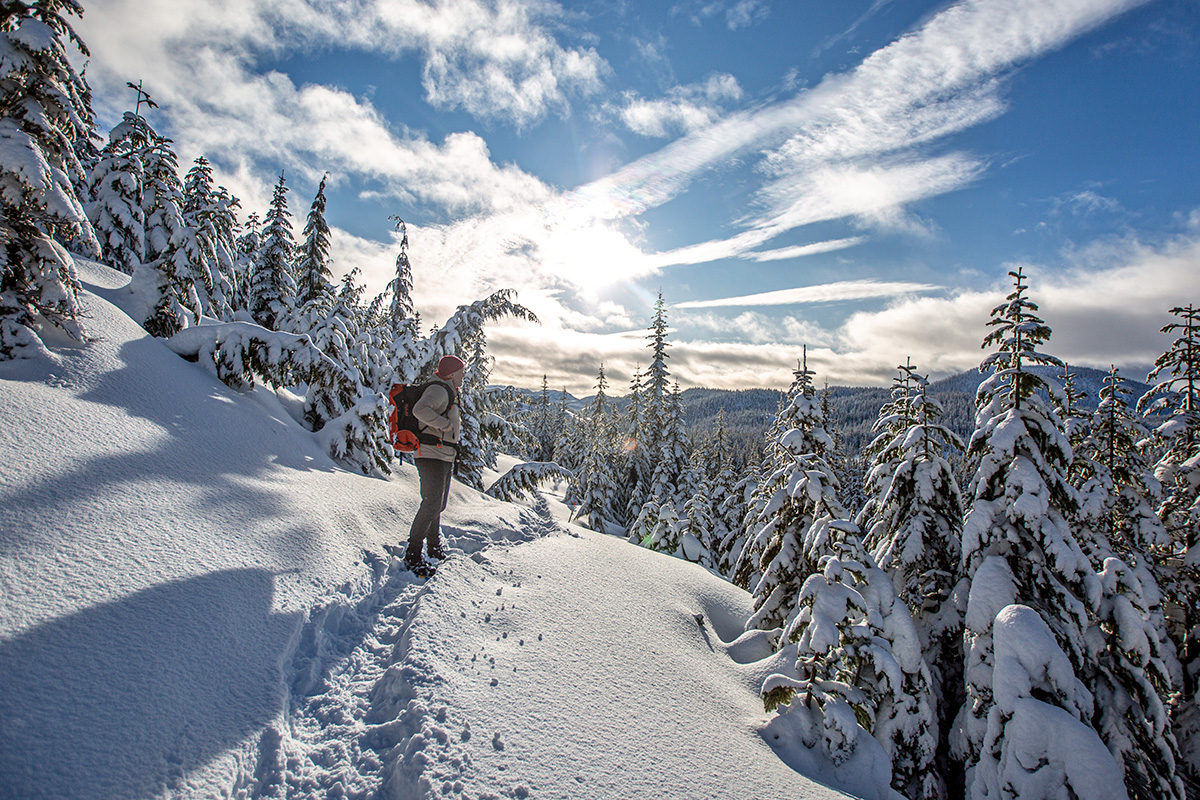
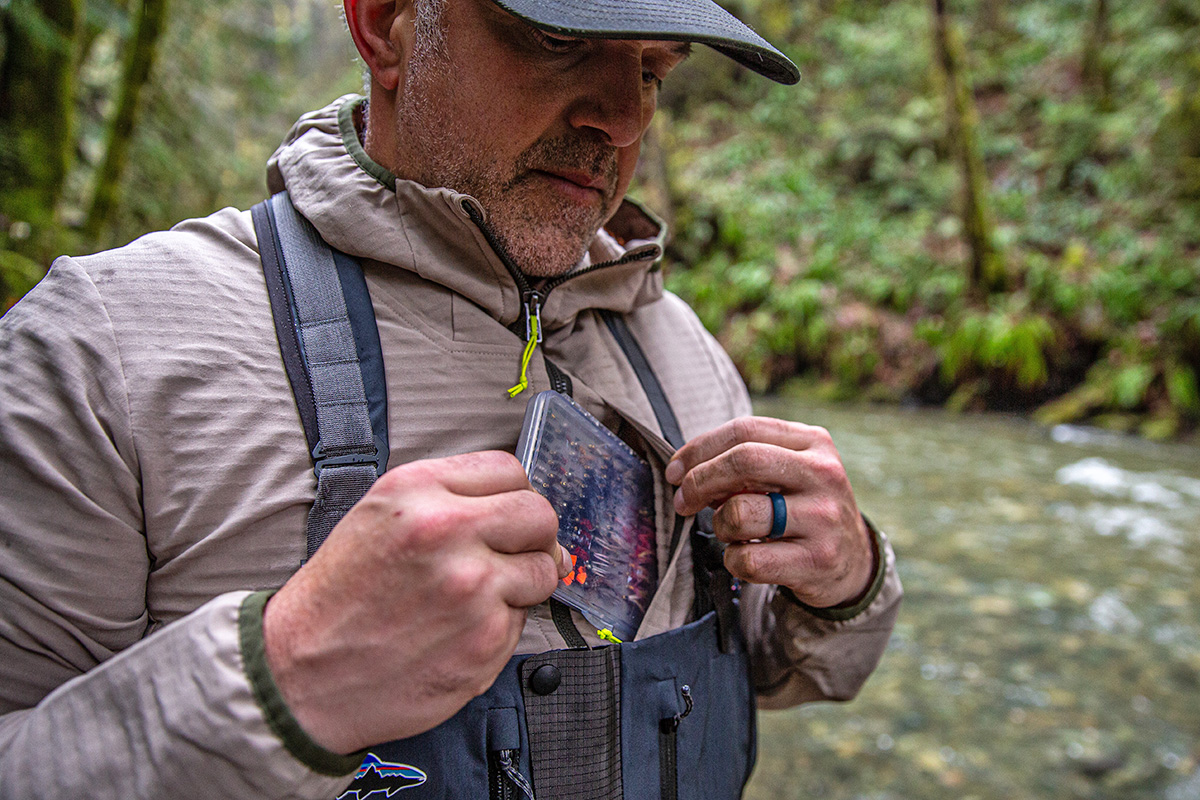
| Jacket | Price | Weight | Category | Construction | Pockets |
|---|---|---|---|---|---|
| Patagonia R1 TechFace Hoody | $219 | 14.2 oz. | Casual/performance | 90% polyester, 10% spandex | 3 |
| Patagonia R2 TechFace Hoody | $229 | 1 lb. 2.3 oz. | Casual/performance | 92% polyester, 8% spandex | 6 |
| BD Coefficient Storm Hoody | $180 | 12.7 oz. | Performance/casual | 92% polyester, 8% elastane | 3 |
| Arc’teryx Gamma Lightweight | $260 | 12.7 oz. | Performance/casual | 86% nylon, 14% elastane | 4 |
Patagonia’s R1 TechFace Hoody straddles the fleece jacket and softshell categories, with good all-around warmth and enough weather resistance and durability to wear as an outer layer in mild conditions. For a step up in warmth, Patagonia also makes a TechFace version of their R2 fleece. We consider the R2 TechFace Hoody a nice cold-weather alternative to the model tested here: Like the R1, the R2 is durable, water- and wind-resistant, and breathable for active pursuits. However, the R2 is heavier at 1 pound 2.3 ounces, uses a bit more polyester and less spandex in the build (read: slightly less mobility), and boasts more storage with six total pockets, including two chest, two hand, and two internal drop-in pockets. The R2 is also noticeably softer against the skin with a higher-loft fleece interior, although the added warmth limits the jacket’s appeal to truly cold days. For milder temperatures, shoulder-season outings, or high-output pursuits, we prefer the thinner and more breathable R1.
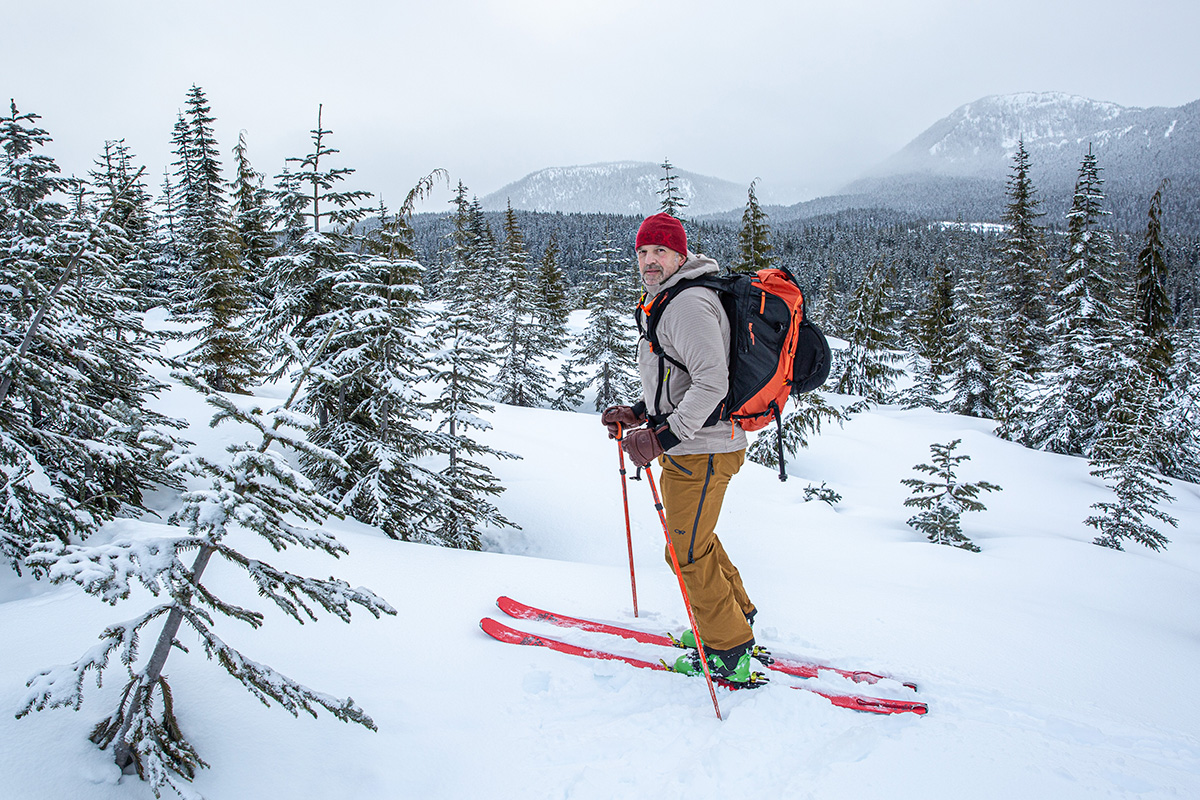
Black Diamond offers an intriguing competitor to the R1 TechFace in their Coefficient Storm Hoody. For around $40 less than the Patagonia, the Coefficient boasts a similar overall construction including a gridded back for warmth and breathability with a weather- and abrasion-resistant exterior. You also get an identical pocket layout, although the hood design is more basic—it's not alpine helmet-compatible or adjustable—and the hem omits a drawcord for dialing in fit and sealing out drafts at the waist. We do appreciate that the Coefficient packs down into a hand pocket, which the R1 TechFace does not, and weight is a bit more competitive at 12.7 ounces. We have yet to try the Coefficient Storm for ourselves, but all signs are positive that it's a well-built—albeit slightly less feature-rich—R1 TechFace alternative.

A final competitor to consider is a true softshell: Arc’teryx's Gamma Lightweight Hoody. Like the R1 TechFace, the Gamma has a durable outer fabric, breathes reasonably well (although not as well as the R1), and has a roomy cut that allows for layering underneath but doesn’t sacrifice range of motion. You also get technical features like a helmet-compatible hood with a laminated brim, articulated patterning for excellent mobility, and a tall collar to help seal out the elements. The Gamma is pricey at $260, but it's impressively lightweight (12.7 oz.), and we consider it the better outer layer and a superior protector against wind and rain. For use as both a baselayer and light shell, however, the R1 is the more versatile piece.
Back to the R1 TechFace Hoody Review See Our Fleece Jackets Guide